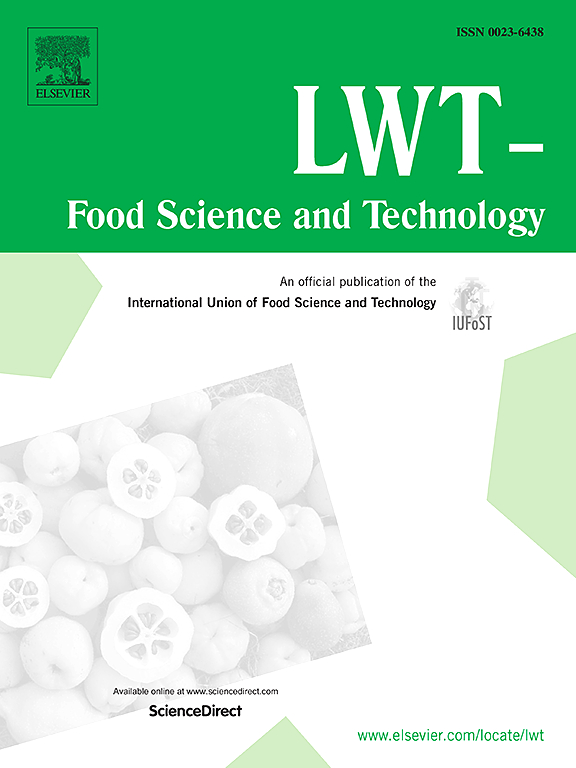Study on the formation and molecular structure of amylose-γ-oryzanol
IF 6
1区 农林科学
Q1 FOOD SCIENCE & TECHNOLOGY
引用次数: 0
Abstract
Amylose is commonly used to encapsulate various guest molecules to form complexes, thereby enhancing the biological stability of either the guest molecules or amylose itself. This stability is closely related to the conformation and aggregation structure of the complexes. In this study, the formation and structure of amylose-γ-oryzanol were investigated using molecular simulation and experiments. The results showed that in the system composed of amylose, γ-oryzanol, and water solvent, amylose could form a spiral structure composed of six glucose residues, with a spiral cavity diameter of 12.1 Å. And one γ-oryzanol molecule was bound to an average of 14 glucose residues of the amylose helix. The van der Waals force (−241.7 kJ/mol) was the predominant intermolecular force maintaining the stability of the complex. The interaction between amylose and γ-oryzanol weakened the interaction between starch molecules and promoted the formation of the V-shaped crystal-ordered structure.
直链淀粉-γ-稻谷醇的形成及分子结构研究
直链淀粉通常用于包封各种客体分子形成复合物,从而增强客体分子或直链淀粉本身的生物稳定性。这种稳定性与配合物的构象和聚集结构密切相关。本文采用分子模拟和实验的方法研究了直链淀粉-γ-稻谷醇的形成和结构。结果表明,在直链淀粉、γ-谷米醇和水溶剂组成的体系中,直链淀粉可以形成由6个葡萄糖残基组成的螺旋结构,螺旋腔直径为12.1 Å。一个γ-谷米醇分子与直链淀粉螺旋的平均14个葡萄糖残基结合。范德华力(−241.7 kJ/mol)是维持配合物稳定性的主要分子间力。直链淀粉与γ-谷维醇的相互作用削弱了淀粉分子间的相互作用,促进了v型晶体有序结构的形成。
本文章由计算机程序翻译,如有差异,请以英文原文为准。
求助全文
约1分钟内获得全文
求助全文
来源期刊

LWT - Food Science and Technology
工程技术-食品科技
CiteScore
11.80
自引率
6.70%
发文量
1724
审稿时长
65 days
期刊介绍:
LWT - Food Science and Technology is an international journal that publishes innovative papers in the fields of food chemistry, biochemistry, microbiology, technology and nutrition. The work described should be innovative either in the approach or in the methods used. The significance of the results either for the science community or for the food industry must also be specified. Contributions written in English are welcomed in the form of review articles, short reviews, research papers, and research notes. Papers featuring animal trials and cell cultures are outside the scope of the journal and will not be considered for publication.
 求助内容:
求助内容: 应助结果提醒方式:
应助结果提醒方式:


